Two Wyoming hunters and their bucks:
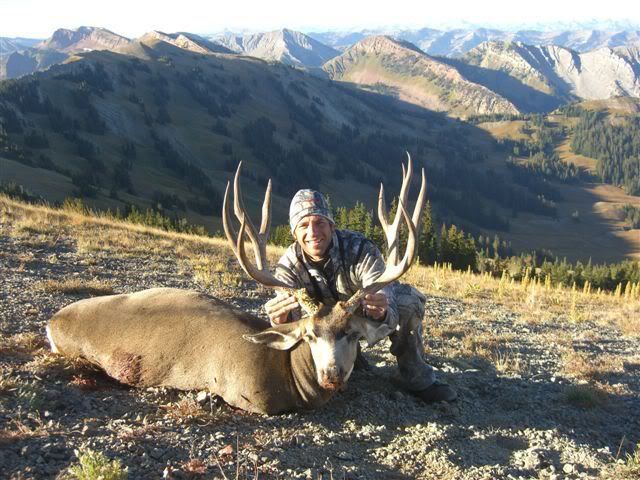
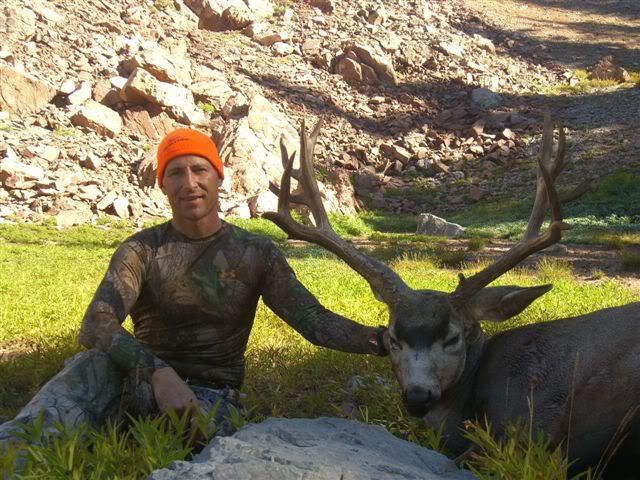
Who says wolves only kill the weak? If a hunter had done this there would be a price to pay.
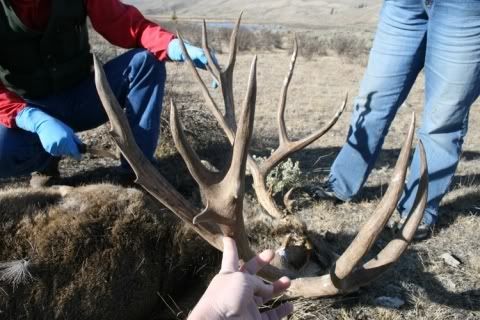
Friend and fellow blogger, Kevin Paulson, sent me this photo of a recent Arizona Strip Buck killed by a hunter named John. Visit Kevin’s website by clicking on the Hunting Life link in the sidebar.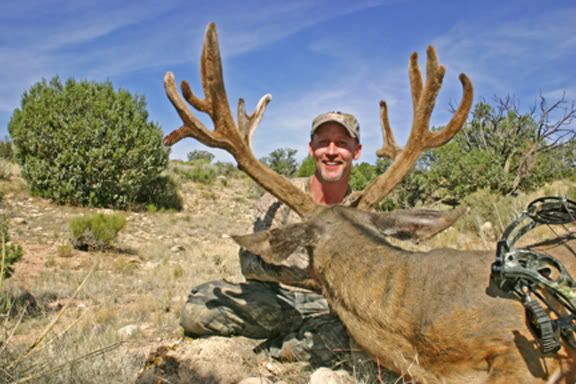
Good work, John
I have wondered why there are lots of acorns some years, and none other years. Acorns are reportedly important to mule deer in building fat reserves for winter. I have also wondered why some years the muley bucks grow very good antlers and other years, they don’t.
My observation for this year is that there are almost no acorns, at least in northern Arizona and southern Utah, and that it is a good horn-growing year.
I believe I know why there are no acorns. We had an early, warm spring – followed by a late hard frost. Since then, we have had a wet fall. I believe this weather pattern is also responsible for the good antlers we have been seeing. It has been quite a few years since I have seen so many big, heavy antlered bucks in general.
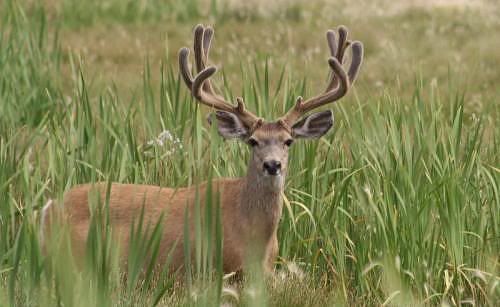
So, I will say to you rifle hunters: Don’t shoot the first buck you see. There are not a lot of bucks, but there are some good ones.
The bucks are also in very good shape already in spite of a lack of acorns.
This is just to whet your appetite.

This is one of the bucks that will be featured on our upcoming DVD
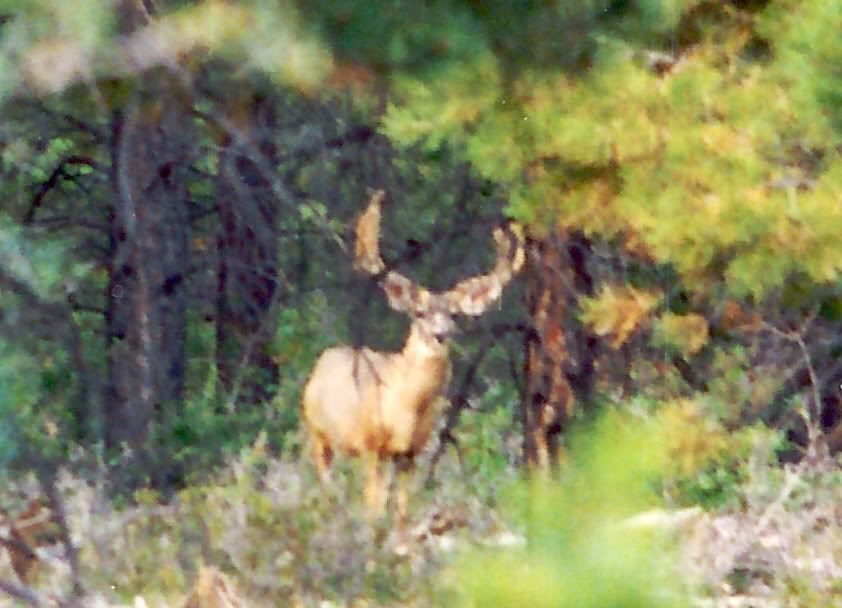
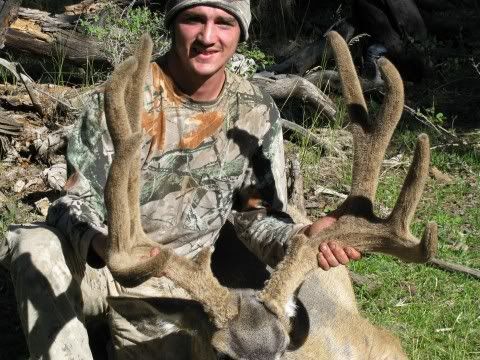
Rock Schardine arrowed a massive muley buck during Utah’s 2008 archery hunt.
The buck grossed 199 2/8 and netted 194.
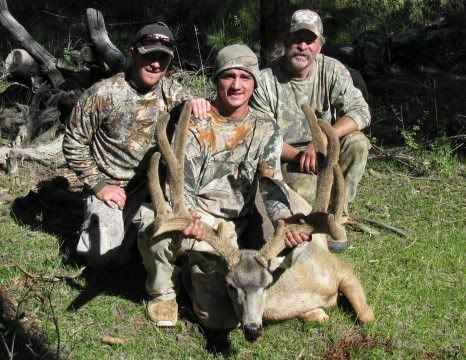
Rock figures the buck will gross score in the 190’s. Hunting is a family affair for the Schardine family. Three of them ride together on one four-wheeler, and have done so since the boys were little. Rock and his brother are accomplished hunters, bull riders, and hunting guides. “Staying on the ATV is nothing compared to riding a bull”, they say.
 Not long ago, a subscriber to the, now defunct, Utah DWR forum made the comment that the DWR could not manage a herd of chickens. I wondered if they could manage a herd of sheep. Managing sheep isn’t all that different from managing mule deer ( I have seen both some pretty wild sheep and some pretty tame mule deer ). Deer and sheep have quite a bit in common. They eat about the same stuff. They stress out when encountering unfamiliar humans and predators. They have about the same number of young over about the same life span. One male can cover about the same number of females. And, so on.
Not long ago, a subscriber to the, now defunct, Utah DWR forum made the comment that the DWR could not manage a herd of chickens. I wondered if they could manage a herd of sheep. Managing sheep isn’t all that different from managing mule deer ( I have seen both some pretty wild sheep and some pretty tame mule deer ). Deer and sheep have quite a bit in common. They eat about the same stuff. They stress out when encountering unfamiliar humans and predators. They have about the same number of young over about the same life span. One male can cover about the same number of females. And, so on.
I don’t know which is easier – managing a herd of sheep or a herd of chickens. Chickens are pretty stupid. But, what I do know is that there are folks who have successfully managed both for quite a few years. So what is the matter with our wildlife agencies? Could they manage a herd of anything? For one thing, most of them don’t view it as part of their job to manage a herd of anything. For another, they have such a educational bias, that they can’t see the forest for the trees.
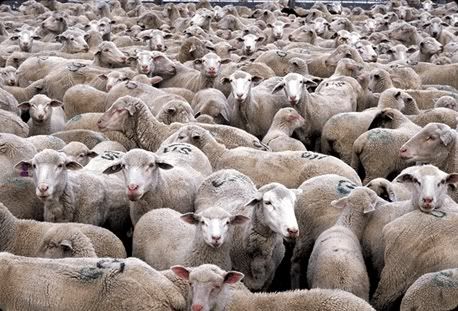 If you and I had a herd of sheep, and our joint livlihoods depended on the management of that herd, and we turned our herd over to one of the state agencies – wouldn’t we go belly up? Why is that? The agencies are unwilling ( once upon a time they may have been willing ) to do what it takes to manage a herd. If a herd can manage itself, then fine, but the agencies will not manage a herd. Their management of wild chickens (grouse/quail), is as good an example of poor herd management as is their management of mule deer.
If you and I had a herd of sheep, and our joint livlihoods depended on the management of that herd, and we turned our herd over to one of the state agencies – wouldn’t we go belly up? Why is that? The agencies are unwilling ( once upon a time they may have been willing ) to do what it takes to manage a herd. If a herd can manage itself, then fine, but the agencies will not manage a herd. Their management of wild chickens (grouse/quail), is as good an example of poor herd management as is their management of mule deer.
If we employed a good sheep herder to manage our herd of sheep, we would have a hard time convincing him that allowing the sheep to be killed by predators would have no impact on the herd. Yet, that is exactly what the agencies believe. The agencies have the crazy notion that if the lions and coyotes don’t kill the deer something else will, and therefore, the lions and coyotes are having no impact.
The owner of a herd of sheep “saves” his surplus sheep for slaugter and for human consumption. He is unwilling to give them to predators. He realizes that sheep are capable of producing an annual surplus and he wants to use that surplus profitably. A concept known as maximum sustainable yield, is a fundamental principle once studied and used by wildlife biologists. Basically, this concept is to maximize your surplus while maintaining your base. Our agencies have strayed about as far from this principle as they can get, but they are still trying to get farther from it than they already are. They are moving steadily toward zero yield.
Abandonment of the principle of “maximum sustainable yield” is a primary reason why modern wildlife agencies cannot ( or will not ) manage a herd of sheep, deer, or chickens. Throw in the lack of interest or motivation, and you’ve got what you’ve got.
The wolf-huggers have pulled off a slick trick. By taking their lawsuit before a liberal Montana Federal judge, they have succeeded in getting an injunction against wolf hunting in Idaho, Wyoming, and Montana for the 2008 season.
The judge decided that the wolves in the three states had not interbred enough. He doesn’t know it, but that is only because they are too busy eating to have sex.
Anyway, read about it at Wolf Crossing
Biologists work to verify wolves are back in the state
————————————–

YAKIMA — State Fish and Wildlife biologists and wolf experts from Idaho captured what they believe are two wolves Friday in western Okanogan County, a development that could confirm the first wolf pack in Washington since the animals were eradicated decades ago.
The biologists fitted both animals with radio collars to track their movements and learn more about them. They also took fur samples for DNA testing to confirm that the animals are not hybrids, state Fish and Wildlife spokeswoman Madonna Luers said.
However, one of the wolves was a lactating female nursing pups, Luers said, and domesticated hybrid animals are not known to reproduce in the wild.
“We’re always cautious,” Luers said. “But if we do get results back and they show these are actual wolves, this will be solid confirmation of Washington’s first resident wolf pack since the species disappeared from the state in the 1930s.”
Test results are expected in a couple of weeks.
After being hunted to near-extinction and listed as an endangered species in 1974, gray wolves were reintroduced to the northern Rockies in the mid-1990s. They thrived, and the wolves in that region were removed from the endangered species list in March.
Environmentalists sued to overturn that decision and on Friday, U.S. District Judge Donald Molloy in Billings, Mont., restored federal protections for gray wolves in that region. Idaho, Montana and Wyoming have an estimated 2,000 wolves.
Wolves are considered endangered in Washington and were never reintroduced here.
Wildlife biologists have known from radio-collar transmissions that wolves sometimes roamed into Washington from Montana or Idaho, and individual wolf sightings have been reported in the state. But resident wolf breeding pairs or packs have not been confirmed.
In recent years, packers made numerous reports of wolves in Okanogan County’s high country, and the number of resident reports in the county’s Methow Valley also grew.
On July 7, biologists conducted a “howling survey” in the area in search of a wolf pack and heard both adult and juvenile howls in response.
“Howling was the first step. This is the second step. The third step will be getting the DNA results,” Luers said. If confirmed, the findings would be historic, she said.
“The species has been gone, in terms of a reproducing animal or species, something that’s actually going to build a population and be a part of our wildlife heritage again,” Luers said. “That’s what’s exciting about this.”
DNA tests also could provide information about their home territory.
DNA tests on an animal that was found dead on state Route 291 about 25 miles northwest of Spokane early last month showed that it was genetically similar to wolves in northwestern Montana and southern British Columbia. The tests confirmed that the animal was not a hybrid.
State officials have been working with biologists, environmentalists, ranchers and other interested citizens to develop a wolf conservation and management plan. A draft is expected to be released for public comment in early 2009
By SHANNON DININNY
THE ASSOCIATED PRESS